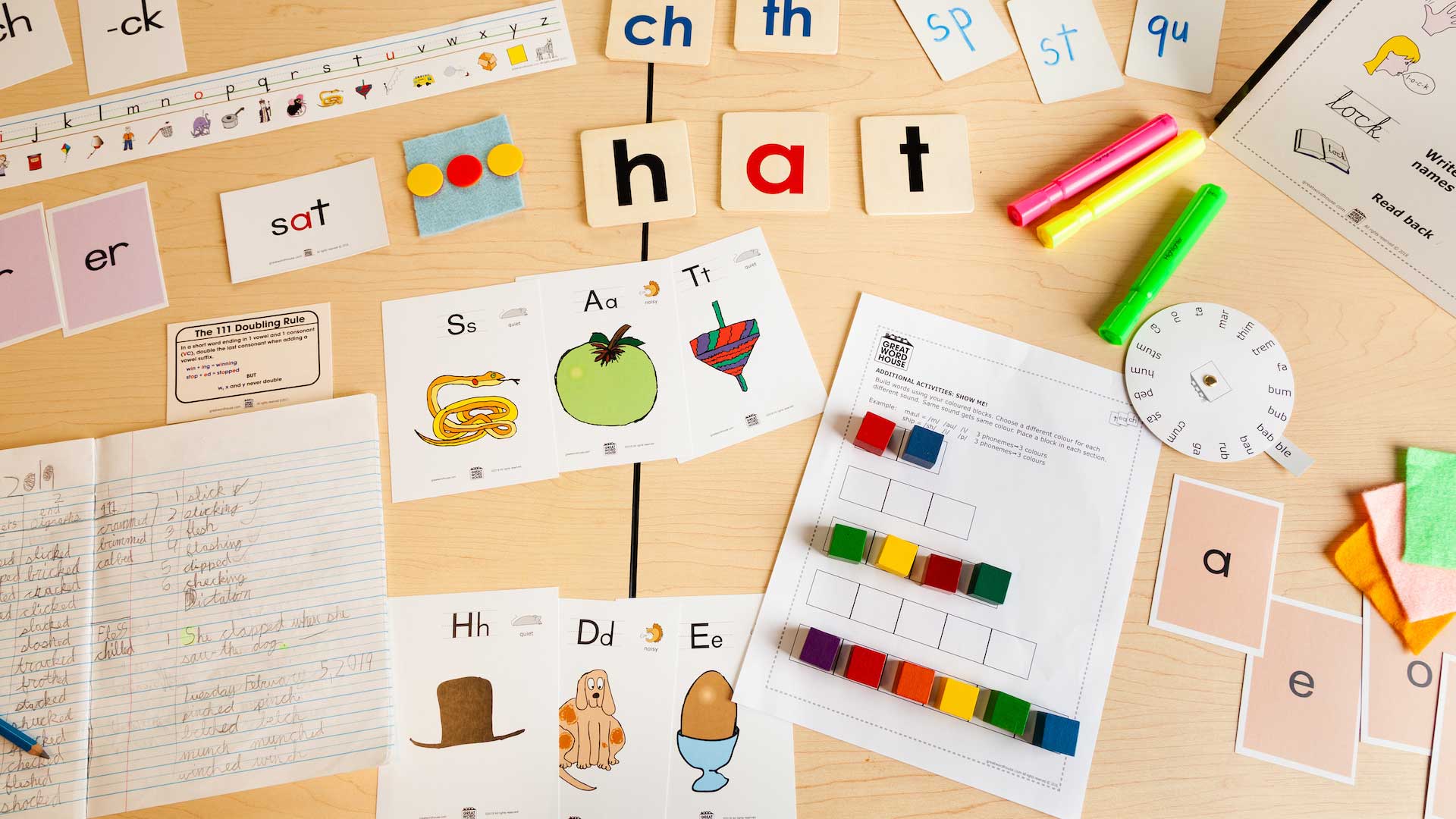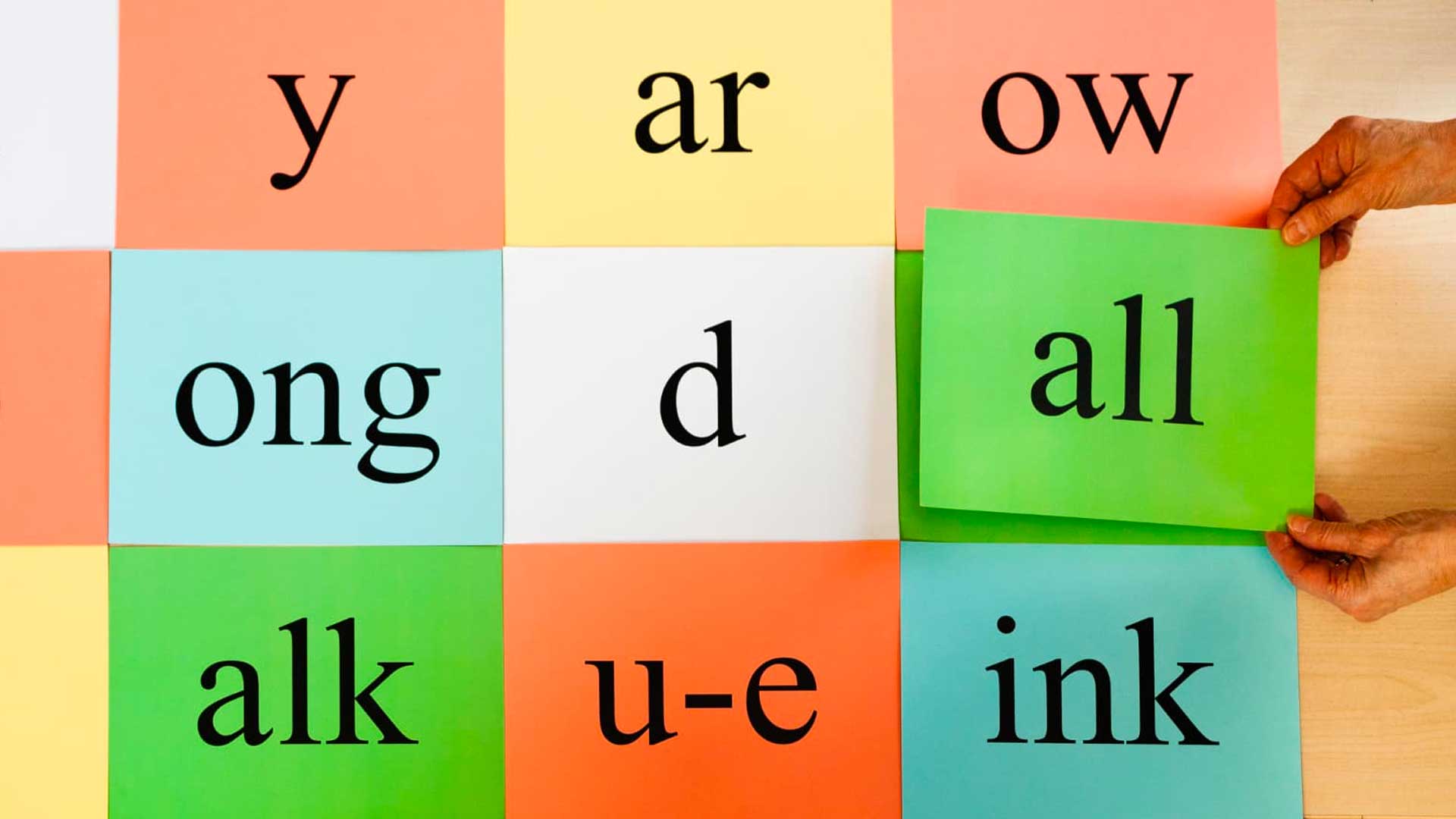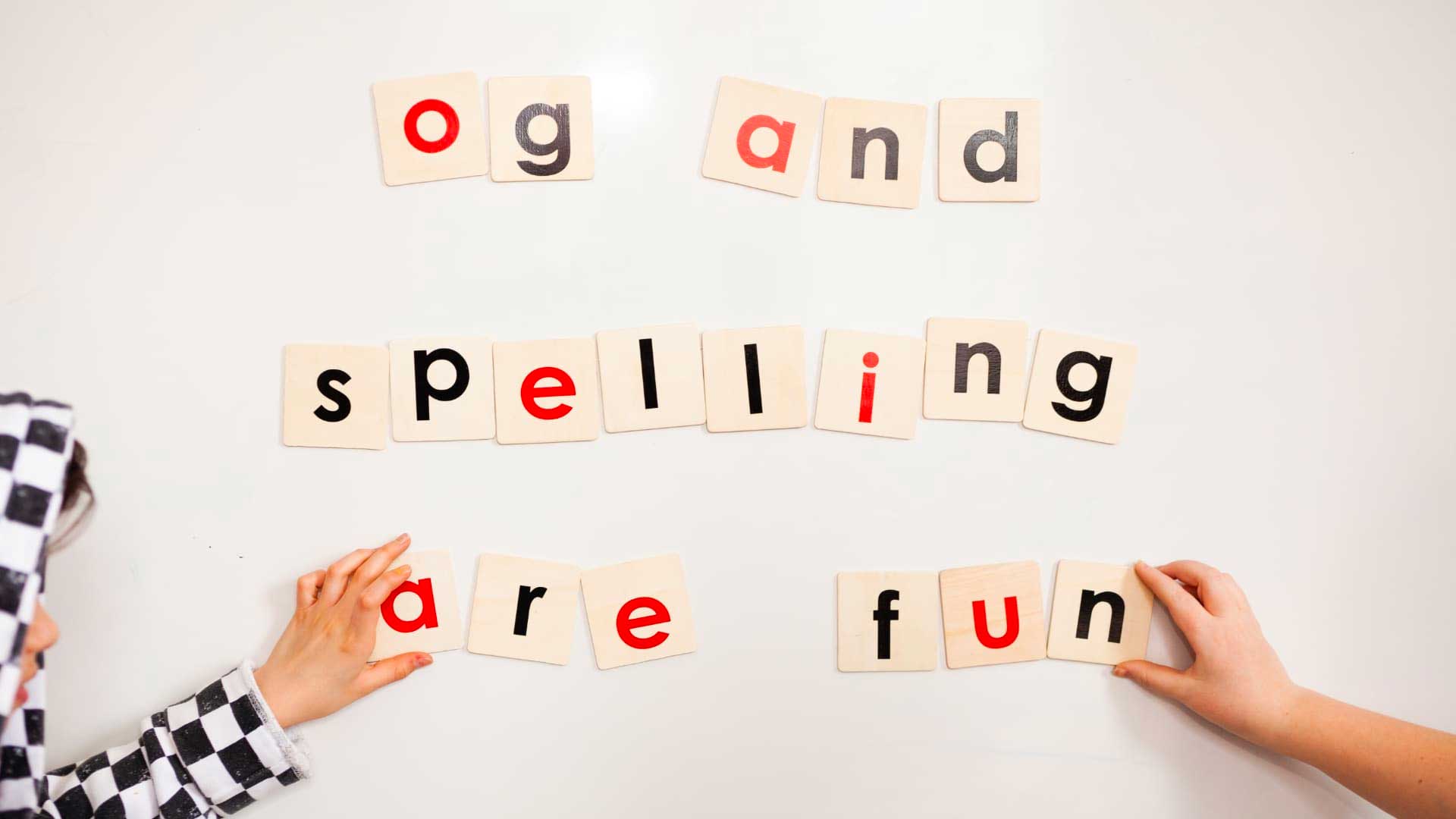This collection of videos explain and demonstrate key elements of the Orton‑Gillingham curriculum.
They provide a quick reference for how to carry out procedures and to remind practitioners of linguistic concepts taught in our courses. Anglo-Saxon has 5 sections: The Alphabet, Lesson Planning, Phonological Awareness, Reading and Spelling. Greek/Latin has one section for Lesson Planning procedures. No matter which membership you have, you will be able to access all the videos.
Sample Videos
The following videos are a sampling of what can be found in the Members Area. We have selected 10 videos from our library of 70 instructional videos for you to sample. With a GWH Membership you will have access to even more videos! We have instructional and demonstration videos with accompanying handouts on a wide variety of subjects.
For a full list and description of our complete video library, see below.
What We Teach
Explains the philosophy guiding the development of the Orton‑Gillingham lesson plan. It shows how the elements of the curriculum build on each other and progress from simple to complex presentation in the lesson plan.
Vowels & Consonants
What is the difference between vowels and consonants? View this video to discover why our alphabet is divided into these two groups.
The Alphabetic Principle
The English language is based on the alphabetic principle. This video explains what the alphabetic principle is and that it refers to how the letters of our language map on to sounds and combine in a particular sequence.
Blending
This video demonstrates how to apply the student’s knowledge established in the Alphabet Card Drill (VAKT) to read short words. The sequence shows how to blend simple words and progress to more complex syllables.
VAKT Objects
This is a variation of the Alphabet Card Drill where are objects are used to scaffold and liven up the activity. Objects are used as memory mediators to promote recall of the grapheme-phoneme association.
S.O.S. - Simultaneous Oral Spelling
Simultaneous Oral Spelling is a unique feature of an Orton‑Gillingham lesson plan. It synthesizes auditory, visual and motoric processes to promote recall. The process known as S.O.S. has 6 important steps. This video demonstrates how a student will carry them out with 1-syllable words.
Syllable Types
There are only 6 syllable types in English words and this video defines each syllable type, providing several examples for each type. Recognizing syllable types promotes word recognition and in turn reading fluency.
Short Vowel Markers in 1-syllable Words
Some spelling patterns are used when syllables have short vowels. View this video to find out which spelling patterns are used with short vowels and where they occur in the word.
Spellings of the /ā/ Sound
Open Syllables and vowel combinations can make the long vowel sound. This video shows all the possible spellings of Long a sound.
Spellings with Magic E
“Magic e” is one type of “Silent e” and it occurs in VCe syllables. It changes the vowel sound, making it “long” or “tense”. This video shows the various spellings with “Magic e”.
Creating a Lesson Plan: Anglo-Saxon Letter Clusters
This video guides you through steps in downloading a lesson plan teaching Anglo-Saxon letter clusters. The full downloadable package is explained.
Monthly Subscription
To access the complete video library, subscribe to one of our monthly subscription plans. You can cancel anytime.
The Members’ Area Video Library
This collection of videos explain and demonstrate key elements of the Orton‑Gillingham curriculum. They provide a quick reference for how to carry out procedures and to remind practitioners of linguistic concepts taught in our courses. Anglo-Saxon has 5 sections: The Alphabet, Lesson Planning, Phonological Awareness, Reading and Spelling. Greek/Latin has one section for Lesson Planning procedures. No matter which membership you have, you will be able to access all the videos.

OG Lesson Planning
Anglo Saxon/Basic – 13 videos
Greek/Latin Morphology – 3 videos
OG Lesson Planning
There are two sets of videos for Lesson Planning.
Anglo Saxon/Basic
- What We Teach
Explains the philosophy guiding the development of the Orton‑Gillingham lesson plan. It shows how the elements of the curriculum build on each other and progress from simple to complex presentation in the lesson plan. - Cluster Lesson Plan
Demonstrates how to deliver a lesson plan focusing on teaching initial consonant clusters, such as, bl-, gr-. The video shows how to teach clusters in the Card Drill, Spelling and Reading sections. Several activities are suggested. - Alphabet Card Drill (VAKT) Introduction
The video explains how Visual Auditory Kinesthetic and Tactile modalities are used in the Card Drill to establish strong links between the letters (graphemes) and their sounds (phonemes). - Alphabet Card Drill (VAKT) Traditional Approach
The video explains in more detail all the steps the student will carry out in the each part of the drill. You will see a teacher and student carry out the visual and auditory components of the drill where kinesthetic and tactile modalities are used by tracing on a rough surface. - Alphabet Card Drill (VAKT) Objects Variation
This is a variation of the Alphabet Card Drill where are objects are used to scaffold and liven up the activity. Objects are used as memory mediators to promote recall of the grapheme-phoneme association. - Alphabet Drill (VAKT) Contrast Variation
In this version a T-chart is used for student to sort pictures and group in the appropriate column depending on the phoneme they represent. Contrasting objects are helpful for students confusing two graphemes and their respective phonemes or to show students how different two graphemes are. - Alphabet Drill (VAKT) Picture Prompts Variation
Instead of using one keyword to prompt for recall of a phoneme, here the video shows how several pictures beginning with the same grapheme and phoneme can be used to promote grapheme-phoneme recall. - Alphabet Drill (VAKT) with Criteria Variation
In this version, the drill uses raised letters and the student goes through the card drill using kinesthetic and tactile senses. The order of the drill is based on criteria that teacher asks for. - Blending
This video demonstrates how to apply the student’s knowledge established in the Alphabet Card Drill (VAKT) to read short words. The sequence shows how to blend simple words and progress to more complex syllables. - Reading Words
In Isolation
An important section of the lesson plan is reading a word list or words in isolation to promote automatic recognition. This video shows you how to incorporate this is an Orton‑Gillingham lesson plan. - S.O.S.
Simultaneous Oral Spelling is a unique feature of an Orton‑Gillingham lesson plan. It synthesizes auditory, visual and motoric processes to promote recall. The process known as S.O.S. has 6 important steps. This video demonstrates how a student will carry them out with 1-syllable words. - S.O.S. with 2-Syllable Words
Simultaneous Oral Spelling is a unique feature of an Orton‑Gillingham lesson plan. It synthesizes auditory, visual and motoric processes to promote recall. The process known as S.O.S. has 6 important steps. This video demonstrates to carry them out with 2-syllable words.
Greek/Latin Morphology
- Morphology Drill
The video explains how Visual Auditory Kinesthetic and Tactile modalities are used in the Morpheme Card Drill to establish teach reading and spelling of Latin prefixes, roots, and suffixes. Also it shows how the drill teaches meaning and parts of speech. - Blending with Morphemes
Using morphemes taught in the Card Drill, this video shows how to combine them so that students can read and spell complex words. - S.O.S. (Advanced)
Simultaneous Oral Spelling techniques are demonstrated with morphologically complex words. Building on S.O.S. procedures learned at lower levels, learn how to adapt them for Latin-derived polysyllabic words.

The Alphabet
17 videos
The Alphabet
- The Alphabetic Principle
The English language is based on the alphabetic principle. This video explains what the alphabetic principle is and that it refers to how the letters of our language map on to sounds and combine in a particular sequence. - Letter Formation
Letter formation in cursive and print is demonstrated, paying attention to the beginning point and the direction of the strokes composing the letter. Several activities are suggested to promote visual discrimination and fine motor control. - Vowels & Consonants
What is the difference between vowels and consonants? View this video to discover why our alphabet is divided into these two groups. - Noisy and Quiet Letters
Some letters are pronounced using vibrations of the vocal cords and others are not. Vibration of the vocal cords produces noisy letters and without the vibration the letters are quiet. - Noisy and Quiet “S”
Learn when “s” is quiet and when “s” is noisy. - Consonants Saying One Sound
This video introduces the consonants that are only associated with one sound or phoneme, such as, l is only pronounced /l/. - The Letter X
Special consideration should be given to the letter “x” as it is pronounced with two phonemes /k/ and /s/. This video shows a teacher and student learning about “x”. - Y: A Special Letter
Another special letter is “y” as it can be pronounced in four different ways depending on whether it occurs in initial, medial or final position. The position also determines its performance as a vowel or consonant. The video explains how to use “y”. - Qu
This cluster needs to be taught separately and whether to consider “u” a vowel or consonant. The video will answer that question. - Modifying Letters “L” & “W”
View this video to learn how these letters modify the vowels that precede it.
The L Effect and W Effect are explained with examples. - Hard & Soft “C” & “G”
The letters “c” and “g” have alternative pronunciations when followed by e, I and y. View this video to find out how to introduce these patterns to students. - Short Vowels
Short vowels occur in Closed Syllables and this video shows which vowels are considered “short”. - Consonant Digraphs
Two adjacent letters that make one sound are called digraphs. The video teaches the common and rare digraphs consisting of two consonants. - Diphthongs
Some vowel sounds are made by sliding or gliding from one vowel sound to another. These graphemes are grouped according to the means of production and pronunciation. The video explains which vowel combinations are diphthongs. - Trigraphs
When three letters make one sound, the combination is called a trigraph. The video explains which letter combinations are trigraphs and where they occur. - R-Controlled Vowels
When “r” follows a vowel, vowel team or occurs in a VCe syllable, this letter can modify the vowel sound. This video will teach you to recognize the three types of R-controlled syllable. - The Schwa
The most common vowel sound is the schwa, which occurs in unstressed syllables. Any vowel or vowel combination can be pronounced with the schwa. Learn that there is some predictability when spelling syllables with a schwa.

Phonological Awareness
8 videos
Phonological Awareness
- How to Teach Phonological Awareness
This video explains what Phonological Awareness is and how to promote it. This skill is essential for developing reading and spelling ability. The video shows how to teach this complex process by scaffolding and breaking the skill into steps that progress from simple to complex. Several activities are demonstrated. - Prosody
The video shows the importance of reading with appropriate intonation, where changes in intonation can reflect a variety of intentions. - Punctuation
Pausing at the appropriate time when reading is often a function of obeying punctuation marks. This video shows how to make the student more aware of punctuation and how to teach a systematic way of pausing for commas and periods. - Word Awareness
Reading fluency is built on many skills, including word awareness. This video helps the teacher to proceed systematically when teaching students to read, starting from simple two word phrases to longer more demanding sentences. - Onset & Rime
This video demonstrates how to teach onset and rime units using shapes as a memory aid and to emphasize this natural break in words. It is an intermediary blending step sometimes needed for students who are having difficulty with automatic recall of word families (rimes) and the consonant(s) that precede them. - Syllables
This video shows how to promote auditory discrimination of syllables in a word. - Counting Phonemes: Make the Rabbit Hop
Segmentation of words into phonemes can be fun. Here we use cute toy rabbits to help the student break words into phonemes. - Activities with Objects
These fun activities help student discriminate beginning, medial and final sounds using objects.

Reading
12 videos
Reading
- The 6 Syllable Types
There are only 6 syllable types in English words and this video defines each syllable type, providing several examples for each type. Recognizing syllable types promotes word recognition and in turn reading fluency. - Syllable Types (CLOVER)
Some teachers help students recall the 6 syllable types using the acronym CLOVER. This is an alternative way of teaching the syllable types. - Syllable Division (Compound Words)
In order to recognize syllables, the student will need to learn how to divide polysyllabic words into individual syllables. This video shows how to break compound words into two base words. - Syllable Division (VCCV Words)
In order to recognize syllables, the student will need to learn how to divide polysyllabic words into individual syllables. This video shows how to break up words into two syllables by dividing 2 consonants that occur between the vowels of the two syllables. - Syllable Division (VCV Words)
In order to recognize syllables, the student will need to learn how to divide polysyllabic words into individual syllables. This video shows how to break up words into two syllables by moving the one consonant that occurs between the vowels to the first or second syllable. - Syllable Division (VCCCV Words)
In order to recognize syllables, the student will need to learn how to divide polysyllabic words into individual syllables. This video shows how to break up words into two syllables by dividing 3 consonants that occur between the vowels of the two syllables. - Syllable Division (-Cle Words)
In order to recognize syllables, the student will need to learn how to divide polysyllabic words into individual syllables. This video shows how to break up words into syllables by recognizing the final syllable is consonant-l-e. - Syllable Division (3-Syllable Words)
In order to recognize syllables, the student will need to learn how to divide polysyllabic words into individual syllables. This video shows how to break up words into syllables by dividing the consonants that occur between the vowels of the three syllables. - Syllable Division (VV Words)
In order to recognize syllables, the student will need to learn how to divide polysyllabic words into individual syllables. This video shows how to break up words into syllables when the adjacent vowels are not acting as a vowel team and belong to two separate syllables. - Sight Words
Reading fluency depends on the automatic recognition of Sight Words. This video defines Sight Words and suggests several activities for teaching how to read and spell them. - Reading a Passage
Fluent reading can be promoted by having the student engage in several pre-reading activities. This video suggests several different objectives for each read through. - Recording Miscues
When a student reads a passage, the teacher can conduct and miscue analysis to track reading fluency progress. This video will suggest how to code for several major miscues.

Spelling
17 videos
Spelling
- FFLLSS Rule
One of the first spelling rules to be taught is demonstrated in the video. Several techniques are demonstrated, such as, guided discovery and pattern recognition. - 111 Doubling Rule
When adding vowel suffixes, single consonants at the end of words are doubled. While apparently a simple rule, it depends on the knowledge of short vowels, consonants and suffixes. This video shows how to teach the rule in simple steps. - Drop the Silent “e” Rule
When adding vowel suffixes, the “Silent e” at the end of words is dropped. While apparently a simple rule, it depends on recognizing VCe syllable type, vowels, consonants and suffixes. This video shows how to teach the rule in simple steps. - Y to I Rule
When does the Y change to an I? This video shows how to predict this change and the three exceptions to the rule. - 211 Doubling Rule
Similar to the 111 Doubling Rule, but applying to 2-syllable words, the 211 Rule depends on the ability to determine if a syllable is stressed or unstressed. View this video to find when to double the final consonant and when not to. - The –es Spelling Rule
When words are plural or a third person verb, a suffix “s” is added. View this video to find out when the suffix “es” is used instead of “s”. - Short Vowel Markers
Some spelling patterns are used when syllables have short vowels. View this video to find out which spelling patterns are used with short vowels and where they occur in the word. - 6 Jobs of Silent “e”
Silent e occurs at the end of words and has 6 jobs. Using multiple examples, learn the six jobs of “Silent e” which will help students to spell and read words. - Spellings with Magic “e”
“Magic e” is one type of “Silent e” and it occurs in VCe syllables. It changes the vowel sound, making it “long” or “tense”. This video shows the various spellings with “Magic e”. - Spellings of Short Vowel Sounds with Vowel Teams
Spellings of short vowel sounds are usually made with single vowels in Closed Syllables, but in this video we show several vowel teams that also make a short vowel sound. - Spellings of Long a /ă/
Open Syllables and vowel combinations can make the long vowel sound. This video shows all the possible spellings of Long a sound. - Spellings of Long o /ŏ/
Open Syllables and vowel combinations can make the long vowel sound. This video shows all the possible spellings of Long o sound. - Spellings of Long e /ĕ/
Open Syllables and vowel combinations can make the long vowel sound. This video shows all the possible spellings of Long e sound. - Spellings of Long I /ī/
Open Syllables and vowel combinations can make the long vowel sound. This video shows all the possible spellings of Long i sound. - Spellings of Long u /ŭ/
Open Syllables and vowel combinations can make the long vowel sound. This video shows all the possible spellings of Long u sound. - Spellings of Long oo /o͞o/
This video shows the Open Syllable and vowel combinations that make this sound. - Spellings of /aw/
This video shows the Open Syllable and vowel combinations that make this sound.
Monthly Subscription
To access the complete video library, subscribe to one of our monthly subscription plans. You can cancel anytime.
